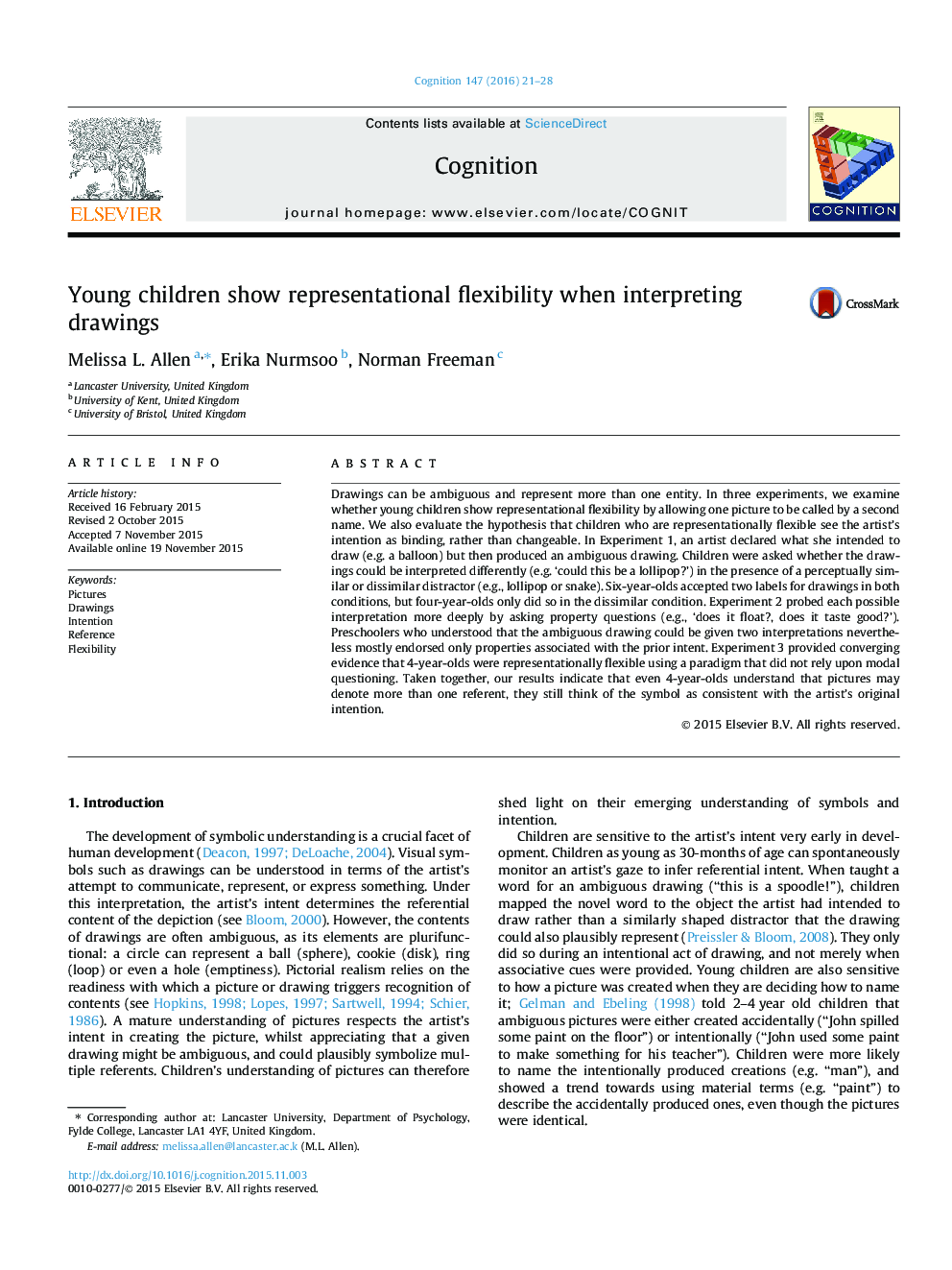| Article ID | Journal | Published Year | Pages | File Type |
|---|---|---|---|---|
| 7286313 | Cognition | 2016 | 8 Pages |
Abstract
Drawings can be ambiguous and represent more than one entity. In three experiments, we examine whether young children show representational flexibility by allowing one picture to be called by a second name. We also evaluate the hypothesis that children who are representationally flexible see the artist's intention as binding, rather than changeable. In Experiment 1, an artist declared what she intended to draw (e.g. a balloon) but then produced an ambiguous drawing. Children were asked whether the drawings could be interpreted differently (e.g. 'could this be a lollipop?') in the presence of a perceptually similar or dissimilar distractor (e.g., lollipop or snake). Six-year-olds accepted two labels for drawings in both conditions, but four-year-olds only did so in the dissimilar condition. Experiment 2 probed each possible interpretation more deeply by asking property questions (e.g., 'does it float?, does it taste good?'). Preschoolers who understood that the ambiguous drawing could be given two interpretations nevertheless mostly endorsed only properties associated with the prior intent. Experiment 3 provided converging evidence that 4-year-olds were representationally flexible using a paradigm that did not rely upon modal questioning. Taken together, our results indicate that even 4-year-olds understand that pictures may denote more than one referent, they still think of the symbol as consistent with the artist's original intention.
Related Topics
Life Sciences
Neuroscience
Cognitive Neuroscience
Authors
Melissa L. Allen, Erika Nurmsoo, Norman Freeman,
